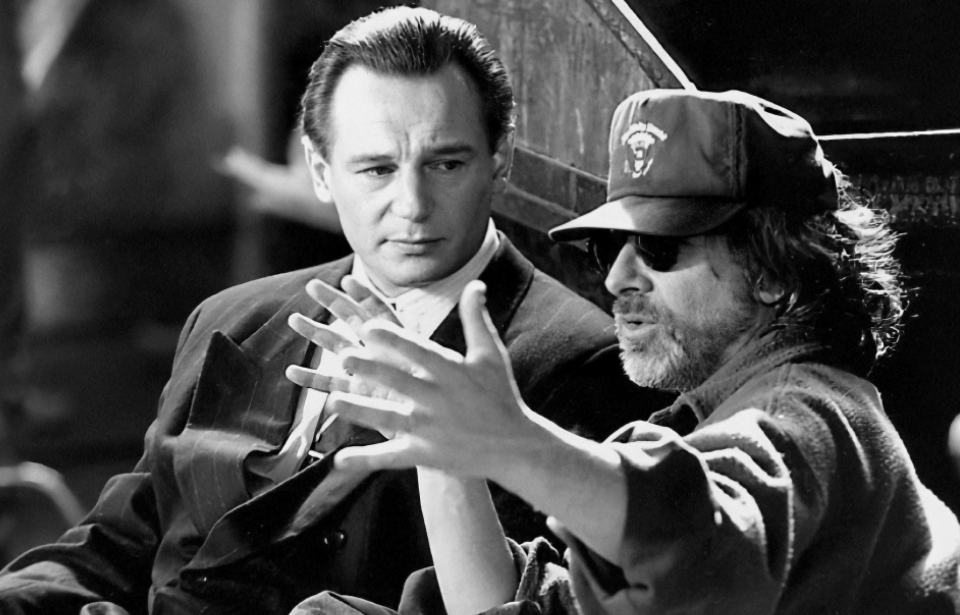It is no easy feat to tackle the Holocaust when creating a movie. After all, when dealing with a historical event as tragic and significant as the Holocaust, it is important to make it clear to the audience that no one survivor story is the same. Schindler’s List is perhaps the best-known and most accurate film created on the subject. The movie, which was released in 1993, went on to win a slew of Academy Awards and is now a staple in high school history classrooms everywhere. Here are some little-known facts about the making of Schindler’s List.
1. Steven Spielberg tried to have other directors create the movie
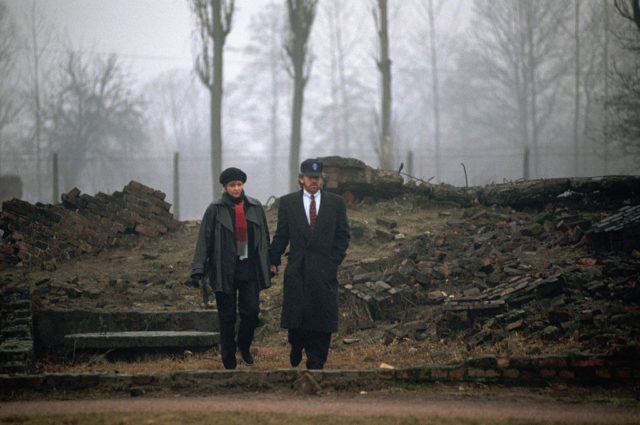
Director Steven Spielberg first learned about Schindler’s List in the 1980s when he read Schindler’s Ark, written by Thomas Keneally. By the 1990s, Spielberg was already a household name after directing films including Jaws (1975), E.T. the Extra-Terrestrial (1982), and the Indiana Jones series. Even though he was well-established, Spielberg felt he was not yet mature – or prepared – enough to tackle a large-scale film on the Holocaust.
Spielberg first approached director Roman Polanski, asking him to make the film. Polanski declined, although he later made his own film about the Holocaust (The Pianist), which earned him a Best Director Oscar in 2003. Spielberg then offered the job to Martin Scorsese, who initially accepted but later backed out after the controversy surrounding his 1988 film, The Last Temptation of Christ. Steven Spielberg traded Scorsese the remake of Cape Fear for Schindler’s List after he saw the rise of Holocaust denial after the fall of the Berlin Wall in 1989.
2. Ralph Fiennes frightened a real Holocaust survivor
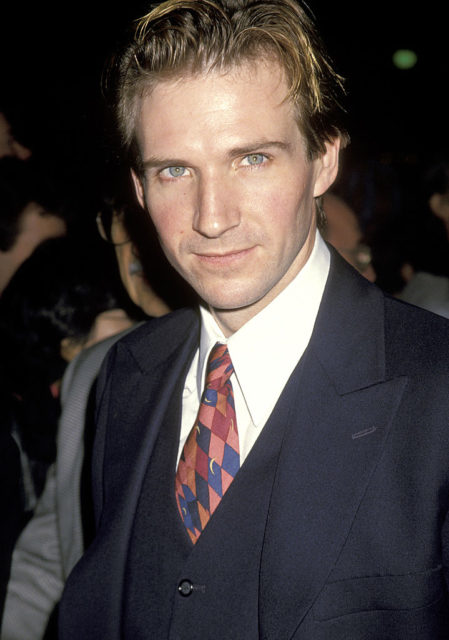
Actor Ralph Fiennes portrayed Krakow-Płaszów’s camp commandant, Amon Goeth. Spielberg cast Fiennes as Goeth because of his “evil sexuality.” For the role, Fiennes put on 28 pounds – primarily by drinking Guinness.
The real Amon Goeth was absolutely terrifying. In an interview, Fiennes discussed how he had researched Goeth’s life. He said, “I remember there being accounts by survivors who talked about their terror when they saw him. He terrified the people of Plaszów. Many accounts of him were just full of the physical fear that people felt when they saw him.” Ralph Fiennes witnessed this physical reaction firsthand when he met Holocaust survivor Mila Pfefferberg, who shook with fear on the film set when they met.
3. Steven Spielberg called Robin Williams to cheer him up
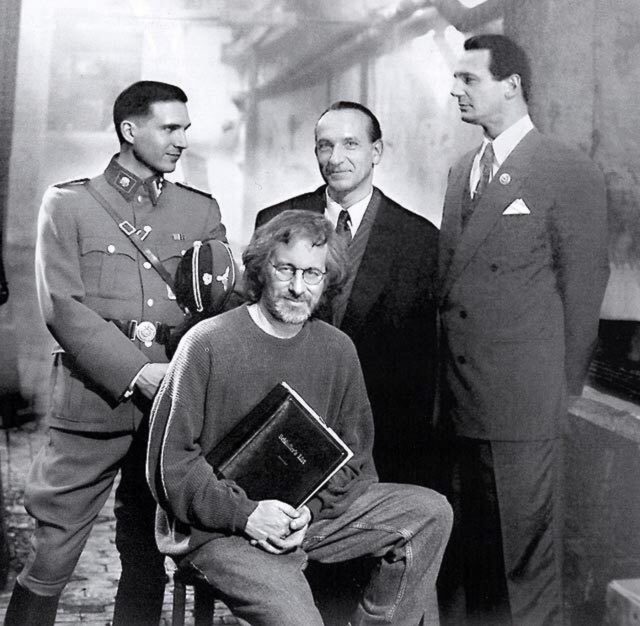
Naturally, directing Schindler’s List took a huge emotional toll on Steven Spielberg. To help him get through the difficult days of filming, Spielberg would call his friend Robin Williams to make him laugh.
At the 2018 Tribecca Film Festival, Spielberg revealed that “Robin knew what I was going through.” Robin Williams would call Spielberg at the same time each week and do “15 minutes of stand-up on the phone.” These friendly conversations helped lighten the load Spielberg was under and make the director laugh hysterically.
4. Ben Kingsley was in a state of shock during the Ghetto Liquidation scene
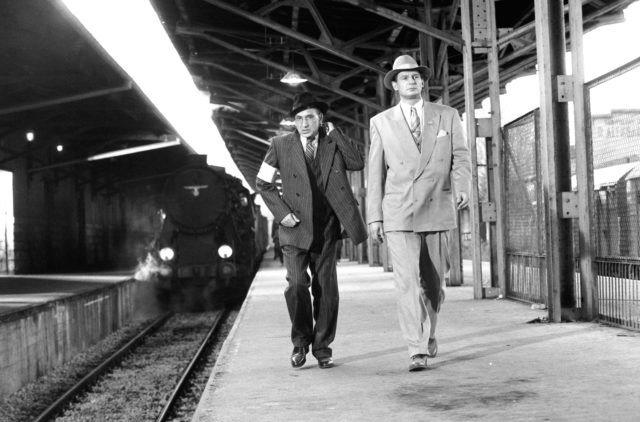
Schindler’s List dramatizes the liquidation of the Krakow ghetto, which occurred from March 13 to 16, 1943. Actor Ben Kingsley, who played Itzhak Stern, later recalled how traumatizing it was to film this scene, stating: “In the liquidation of the ghetto scene, I knew I had to serve the story. I remembered my lines, but I was in deep shock. No acting. The beautifully orchestrated chaos was unrepeatable or unforgettable.”
5. The scene where Goeth tries (and fails) to shoot Rabbi Levertov really happened
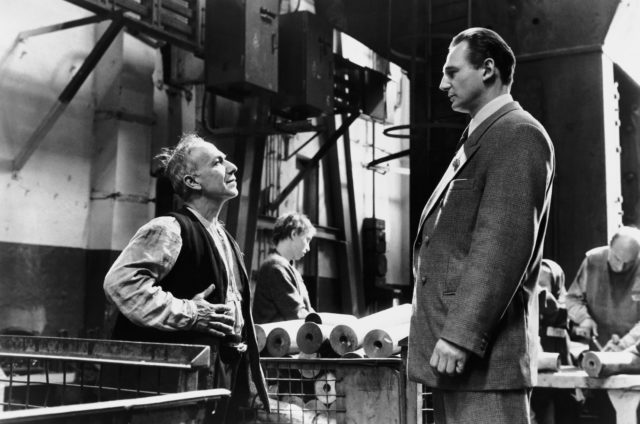
In one scene in Schindler’s List, viewers see Amon Goeth try and shoot Rabbi Levartov (played by Ezra Dagan) after discovering how small his pile of hinges was. Goeth uses two different pistols, each of which misfires. Eventually, Goeth gives up and Levertov survives.
In 1957, the real Rabbi Levertov told his version of the story. “Apparently not satisfied with the Rabbi’s daily production, [Goeth] took him by the collar and threw him to the small steps which led to the second room of the barracks. Then he quite calmly took out a revolver from his pocket, put the barrel to the Rabbi’s head and pulled the trigger. The revolver got stuck and did not fire.
“He pulled the trigger again and again, and when the revolver still refused to fire, he put it back in his pocket and from a second pocket he took out a small revolver, with a pearl design, an automatic, put it to the Rabbi’s head and pulled the trigger. Again, this time the revolver did not fire. To this scene all the workers from the barracks were onlookers, standing without breathing, in dreadful fright.”
6. Steven Spielberg warned the “Girl in Red” not to watch the movie until she was an adult
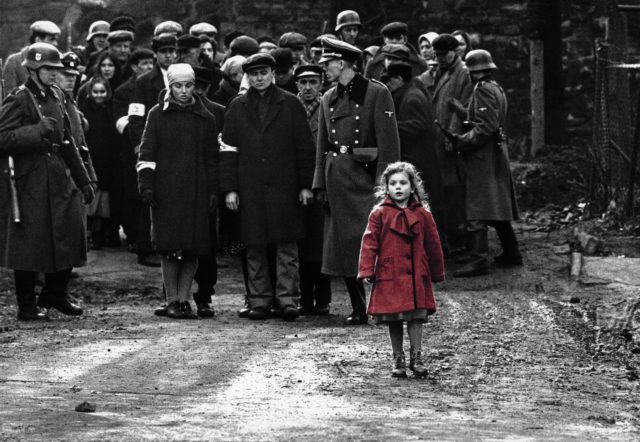
One of the most haunting characters in Schindler’s List is a little girl wearing a red coat. Three-year-old Oliwia Dabrowska played a little girl in a red coat who was walking around the Krakow ghetto as it was being liquidated by the German troops.
Steven Spielberg made Dabrowska promise that she wouldn’t watch the film until she turned 18. However, Dabrowska ended up watching the film when she was only 11, which resulted in her feeling emotionally confused about her role. Dabrowska later said, “I was ashamed of being in the movie and really angry with my mother and father when they told anyone about my part. I kept it a secret for a long, long time, though at high school people got to know on the internet.”
When she went back and watched the film at 18, she realized she should have kept her promise to Steven Spielberg. “I realized I had been part of something I could be proud of. Spielberg was right: I had to grow up into the film.”
7. Steven Spielberg didn’t accept a salary for the movie
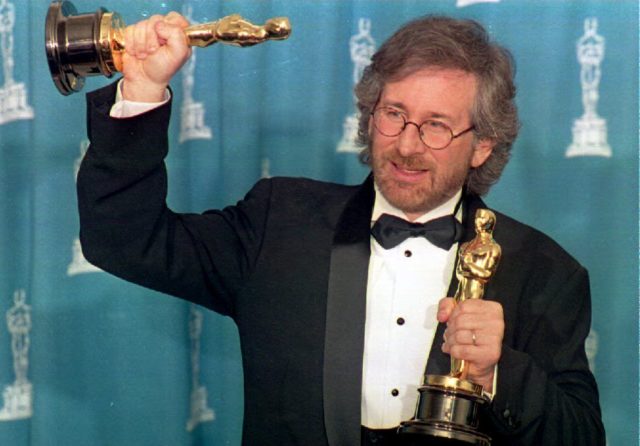
More from us: Oskar Schindler’s Secretary, Mimi Rienhardt, Has Passed Away At Age 107
Despite working with a budget of only about $22 million, Schindler’s List ended up making over $320 million at the box office. However, Steven Spielberg did not accept any of his earnings from Schindler’s List.
Even before making the movie, Spielberg knew he wouldn’t take any money, recounting: “As I said to Sid Sheinberg, my mentor, I could not accept any money from Schindler’s List – if it made any money. It was blood money, and needed to be put back into the Jewish community.”
Spielberg ended up giving all of the money he would have made to the Righteous Persons Foundation, which his earnings helped establish.
